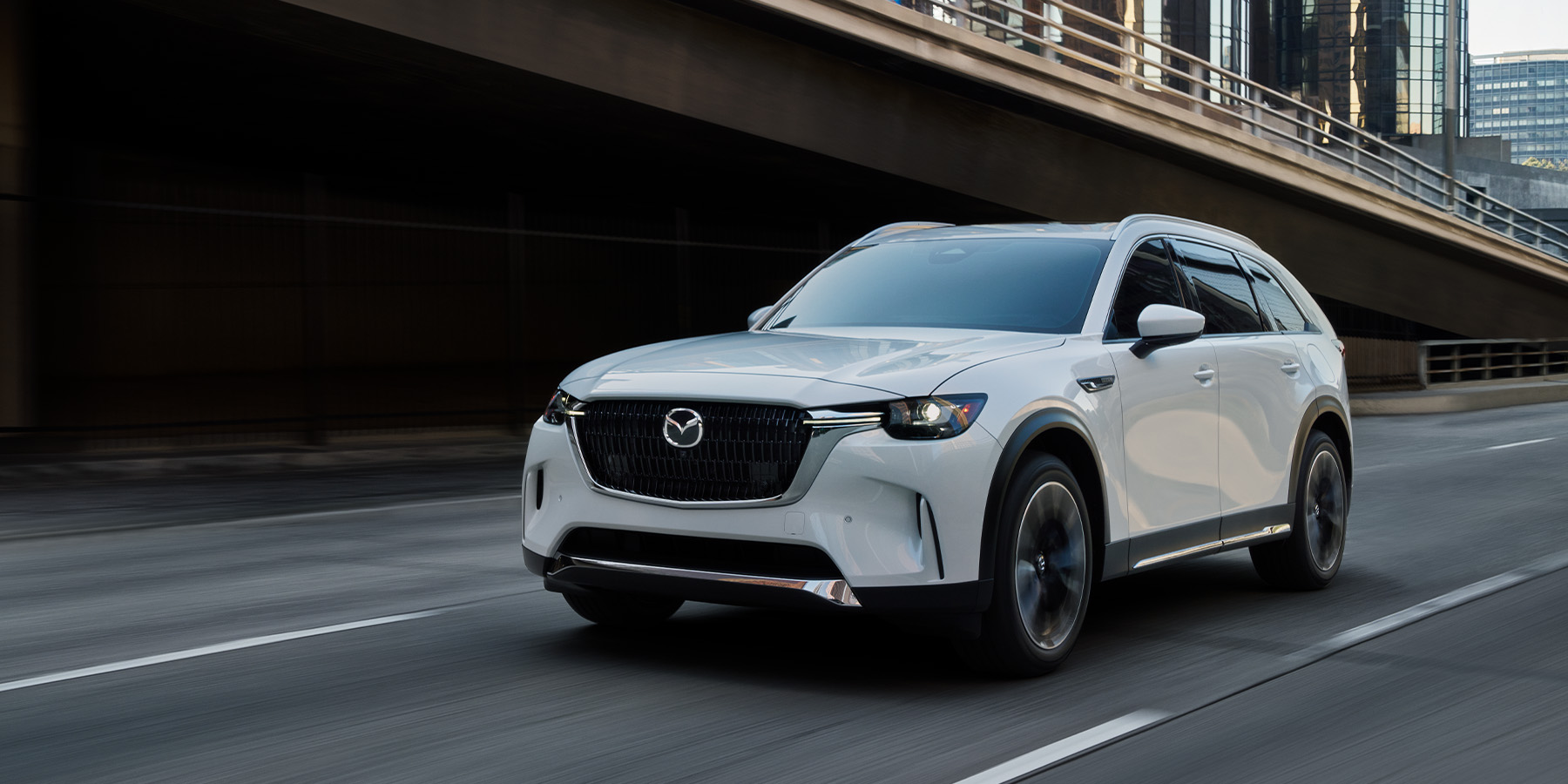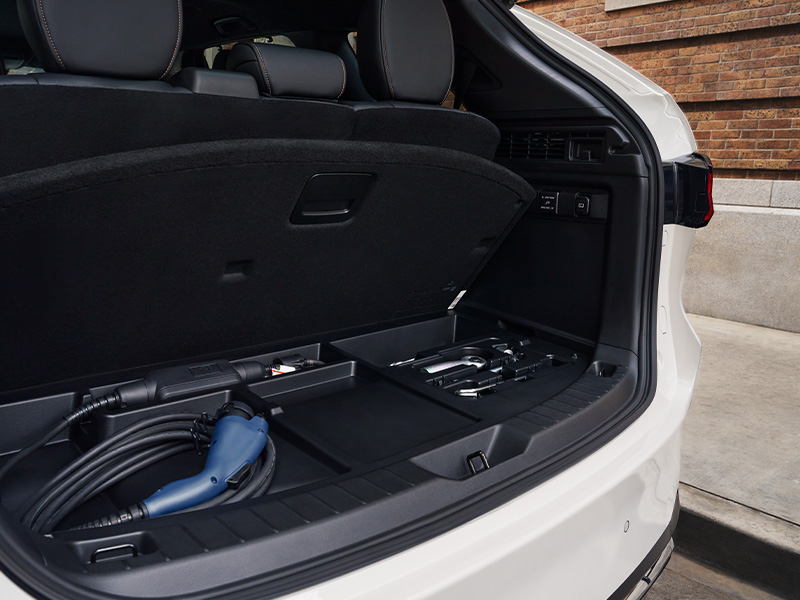How Do Electric Cars Work?

In simple terms, electric vehicles convert stored energy into mechanical propulsion. The stored energy comes from a battery pack that, in all-electric vehicles, replaces the need for gasoline or diesel fuel tanks found in Internal Combustion Engine (ICE) vehicles.
There are many parallels between electric and ICE vehicles, including the fact that electric motor designs vary between manufacturers and different vehicle makes and models. The manufacturers of Electric Vehicles (EVs) also must prioritize different parameters — performance, range, cost, etc. — when designing their vehicles.
Still, some generalizations about how electric cars work can be made. Let’s take a closer look at what makes EVs go, including the function of a few important components.

Electric vs. electrified
But first, some semantics. When discussing how electric cars work, it may be helpful to note that there’s technically a difference between “electric” and “electrified” vehicles – although the term “Electric Vehicle” (EV) is now so commonplace amongst consumers that the distinction may be losing its relevance. (As such, you can skip to the next section if this doesn’t interest you.)
Nevertheless, for the sake of argument, an electric vehicle is technically one that stores only electrical energy on board. These all-electric vehicles are known as Battery Electric Vehicles (BEVs) — sometimes shortened to just electric vehicles or EVs. To add to the confusion, the term EV, as you probably know, is also often used as an umbrella term for all types of electric and electrified vehicles.
Meanwhile, “electrified” more commonly applies to vehicles that store more than one type of energy for propulsion (every ICE vehicle has a starting battery that’s used for propulsion). Types of electrified vehicles include:
- Traditional hybrid vehicles (HEVs): These vehicles have a small battery pack that is charged only by the gasoline engine and regenerative braking.
- Plug-in hybrid electric vehicles (PHEV): PHEVs use a larger battery pack compared to HEVs, and this battery pack can power the vehicle for longer distances and/or at higher speeds. The battery is recharged by plugging the vehicle in, regenerative braking, and the gasoline engine. When the PHEV’s battery is depleted, the gas-powered engine automatically takes over propulsion.
- Fuel Cell Electric Vehicles (FCEVs): These vehicles use a hydrogen fuel cell stack to supply an electric motor and small battery pack. Energy is loaded by hydrogen station refueling, a process that is not yet widely available.
How do electric cars work?
It can be helpful to think of an electric car as a much more sophisticated version of a cordless drill or toothbrush. These appliances take electrical energy from a power point and load it into a battery. That energy drives an electric motor, which provides the mechanical output for your device — the vibrating of the toothbrush or spinning of the drill chuck.
Electric vehicles draw energy from an onboard battery pack that’s charged using electricity from various sources, including solar energy, hydropower, natural gas, nuclear and coal. It then uses that energy to drive an electric motor, which converts that energy to mechanical rotation, propelling the car. Switching the power application within the motor causes the motor to turn in the other direction, moving the car backward. (This is why some HEVs do not have a reverse gear in the transmission — they reverse on electric power alone).
When the vehicle is moving but does not require propulsion, such as when it’s slowing down or gravity is propelling it, the motor becomes a generator and recharges the battery.
Parts of an electric car’s drivetrain
The primary components of an electric car’s drivetrain are the battery pack, motor(s), inverter, and the hardware and software to run it all. Unlike an ICE vehicle that houses just one gasoline engine, an electric vehicle may have more than one motor (up to four), and each motor may drive the front or rear wheels, or just one of them. The majority of electric vehicles do not have transmissions, since the electric motor does not need gears to multiply power at low speeds and can propel the vehicle forward or backward without changing gears
Electric traction motor
The electric motor(s) drive the vehicle, and their output is typically described via horsepower (hp) or kilowatts (kW). There are several types of electric motors but, in many cases, including that of the Mazda CX-90 PHEV, the motor is an AC induction motor.
A key advantage of electric motors — beyond that of their ability to eliminate tailpipe emissions — is that they can provide large quantities of torque at very low RPM, creating very quick acceleration that’s often (and not-quite-accurately) touted as “instant.”
Battery pack
An EV battery pack is typically comprised of multiple (sometimes 5,000 or more) cells — think of the AAA batteries in your TV remote — within cylindrical, prismatic, or pouch-style housings. Like other larger batteries, their capacity is measured in kilowatt-hours (kWh), so where your TV remote’s AAA battery might provide 800 mAh (milliampere-hours), your EV might provide 100 kWh.
All other things being equal, the larger the battery, the more range it will provide. But all things are typically not equal, which is why electric vehicle efficiency varies almost as much as petroleum-powered vehicles: Imagine two five-seater EVs, one a bulky SUV-style vehicle and one a sedan. The large and heavy EV with a 212-kWh pack might provide up to 330 miles of range, but the small, relatively light vehicle with a 112-kWh battery (roughly 53% smaller) provides up to 410 miles of range.
The most common type of battery is energy-dense lithium-ion, like those found in your laptop or phone. They operate best when in ideal working temperatures which is why electric vehicles have battery cooling (and warming) systems.
Finally, the battery pack is normally the heaviest part of an EV, the main reason EVs weigh more than their comparably sized ICE vehicle counterparts. The batteries are mounted as low as possible to lower the center of gravity and provide the best stability.
Charge port
The charge point is where you connect a cable to reload your EV battery. Their location has not yet been standardized so, unlike a fuel-fill door, it may be found in the front, rear, or on either side of your EV.

Some common charge port types include:
- SAE J11721: A common five-pin round plug on earlier EVs (except Tesla). It is capable of Level 1 and Level 2 charging.
- CCS Combo: This looks like a J1772 with two large added pins. It is capable of Level 2 and Level 3 charging, and is the most common on new, non-Tesla EVs.
- CHAdeMO: This round multi-pin charger was the early standard for Level 3 charging, but the CCS has proven more popular; very few new EVs use this port.
- North American Charging Standard (NACS): Supports both Level 2 (“destination”) and Level 3 (“supercharger”), and adopted by many automakers – many of which have partnered with Tesla to significantly expand this network. Charging stations will be accessible to all EV customers, offering both CCS and NACS connectors. Mazda has announced its plans to adopt NACS for its charging ports on its BEVs launched in North America from 2025 onward.
The type of cable and port determine what level of charging you can connect to. You can learn more about this in our article on EV Charging Types.
Inverter
An inverter converts the direct current (DC) of batteries to the alternating current (AC) that most of new EV motors run on.
Regenerative braking
One thing no ICE vehicle does to the same extent as EVs is recover otherwise wasted energy. To understand how regenerative braking works, think about the energy it requires to get a vehicle moving or climb a grade. When an ICE vehicle is stopping or going down a hill, that energy is typically “lost”, becoming heat in the brakes and, sometimes, transmission fluid. But in an EV, the propulsion system changes to a generating system, and the gravity or kinetic energy is converted back to DC power and returned to the battery pack.
Regenerative braking is performed automatically, though some vehicles allow driver control over how “aggressive” the regenerative braking (regen, colloquially) is, from next-to-none to levels that create the sensation of “one-pedal driving” — where lifting your foot off the accelerator triggers maximum regeneration and, with a little forethought, requires drivers to press the brake pedal only for the last few MPH as they approach a stop sign.
Note that regenerative braking is no substitute for vigilant driving or hard braking in emergency situations.
Shop the Mazda EV Family
Reading about how electric and electrified vehicles work is one thing — driving them is another. You do not need an electrical engineering degree to experience the thrill of driving an EV like the Mazda CX-90 PHEV, the CX-70 PHEV, and the CX-50 Hybrid.
These SUV’s combine electric and combustion propulsion and have all the power and responsiveness for which Mazda is known.
Build and price your Mazda vehicle online or visit your local Mazda dealer to test-drive one today.
This article is intended for general informational purposes only and is based on the latest competitive information available at the time of posting. Information herein is subject to change without notice and without Mazda incurring any obligations. Please review a variety of resources prior to making a purchasing decision. Visit Resource Center for more articles.




















